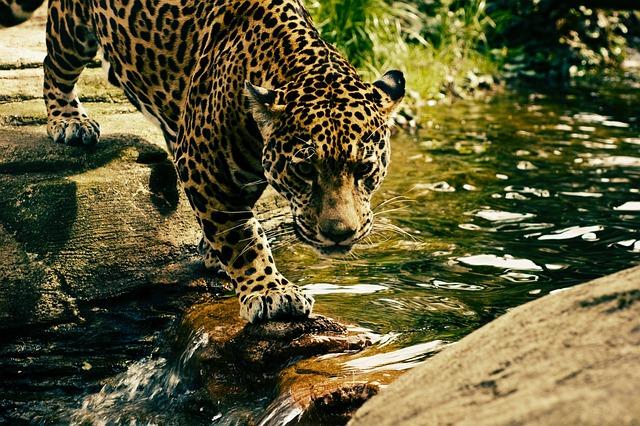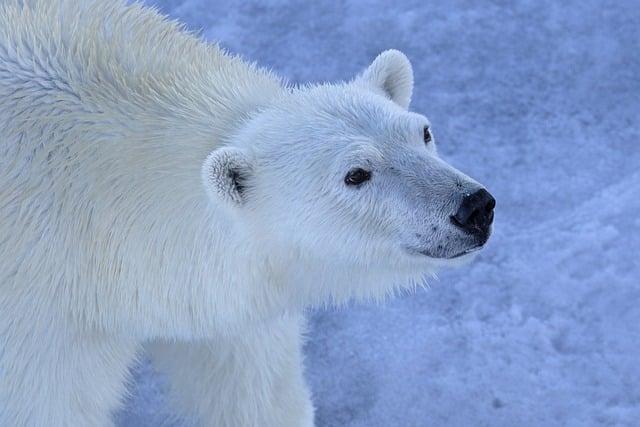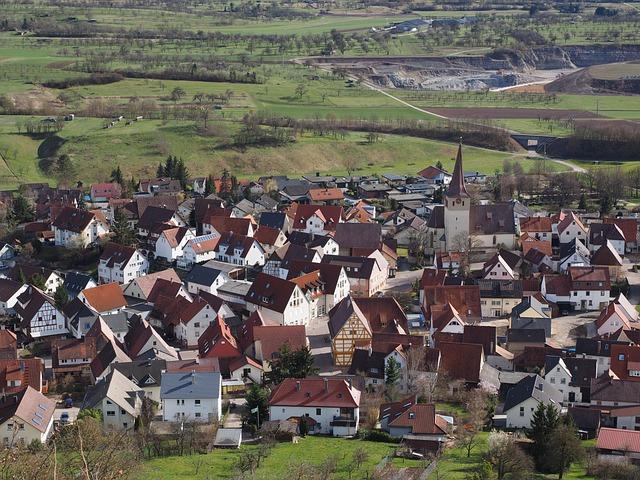In a transfer that has sparked heated debate throughout the conservation network, Namibia’s govt has introduced plans to cull sure wild animal populations in line with expanding conflicts between flora and fauna and human actions. This resolution, framed via officers as a vital measure to verify agricultural viability and network protection, has raised alarm amongst conservationists who argue that such an way is each tragic and myopic. Critics assert that the cull may undermine years of conservation efforts and exacerbate the very demanding situations it seeks to mitigate. As the consequences of this resolution spread, professionals are calling for a reevaluation of flora and fauna control methods that prioritize long-term ecological steadiness over non permanent answers. This newsletter delves into the complexities of Namibia’s culling plan, the reactions it has provoked, and the wider implications for flora and fauna conservation within the area.
Issues Over Namibia’s Natural world Culling Technique and Its Moral Implications
As Namibia’s govt strikes ahead with a arguable flora and fauna culling technique, conservationists are voicing their considerations concerning the moral implications of such movements. The deliberate culling objectives to regulate animal populations and mitigate human-wildlife conflicts; then again, critics argue that it displays a short-sighted way that disregards the deeper ecological and moral dimensions of flora and fauna control. They emphasize that decreasing animal numbers does no longer cope with the underlying problems associated with habitat loss, local weather alternate, and insufficient network engagement in conservation efforts.
Many professionals are advocating for selection answers that might advertise coexistence and adaptive control somewhat than resorting to deadly measures. Imaginable methods come with:
- Enforcing non-lethal deterrents to forestall flora and fauna from encroaching on human settlements.
- Growing community-led conservation tasks that incentivize native stewardship of flora and fauna.
- Bettering training and outreach techniques to foster working out and appreciation for flora and fauna amongst native populations.
The culling debate raises vital questions on our obligations towards flora and fauna and the futuristic view of sustainable conservation practices. The will for a holistic way, one who harmonizes human wishes with flora and fauna preservation, hasn’t ever been extra urgent.
Affect of culling on Ecosystem Stability and Biodiversity in Namibia

The culling of untamed animals in Namibia has sparked vital debate amongst conservationists,who argue that such movements may result in unexpected penalties for the sophisticated steadiness throughout the ecosystem. As huge herbivores are got rid of, the crops they most often graze on might proliferate unchecked, in all probability changing habitats that a lot of species depend on for survival. this shift may have a cascading impact, impacting no longer simplest flowers but additionally fauna that rely on those vegetation for nourishment and safe haven. Moreover, the aid of particular populations might disrupt predator-prey dynamics, resulting in an imbalance that might threaten each species range and ecosystem resilience.
Additionally, biodiversity in Namibia is intricately related to the intricate relationships amongst more than a few species. The removing of explicit wild animals may diminish genetic range,wich is very important for the adaptability of species to environmental adjustments. Conservationists warn of the possibility of increased human-wildlife conflict as ultimate animals might crowd restricted assets, prompting them to project nearer to human settlements searching for meals and water. The ripple impact of culling may even lengthen to native communities that depend on flora and fauna for eco-tourism, which is an important financial useful resource. The next desk illustrates some key affects of culling on ecosystem dynamics:
| Affect | Description |
|---|---|
| Plants Overgrowth | Unchecked plant enlargement can disrupt habitats. |
| Altered Predator-Prey Dynamics | Disruption might threaten each predator and prey species. |
| Diminished Genetic Variety | Hinders adaptability to environmental adjustments. |
| Greater Human-Natural world Battle | Wild animals might encroach on human settlements. |
| Financial Affects | Native communities might be afflicted by declines in eco-tourism. |
Voices from the Box: views of Conservationists on Quick-Time period Answers

Amidst the arguable resolution to cull wild animals in Namibia,a refrain of conservationists has emerged,expressing deep fear over the consequences of such non permanent measures.Many argue that those movements don’t seem to be justifiable as they fail to deal with the basis reasons of flora and fauna conflicts, comparable to habitat loss and lengthening human encroachment. dr. Sarah Uthorp,a number one flora and fauna biologist,emphasised that “non permanent answers like culling simply function a band-aid,ignoring the vital want for sustainable land-use practices and network engagement.” Additionally, some professionals warn that culling may disrupt current ecosystems, resulting in accidental penalties that can additional exacerbate the issues that policymakers intend to unravel.
In exploring the views of the ones at the flooring, it turns into glaring that conservationists suggest for a extra holistic method to flora and fauna control. They counsel possible choices that prioritize long-term ecological steadiness over instant fixes.This comprises:
- Group-based training techniques to foster coexistence between locals and flora and fauna.
- Funding in sustainable tourism that gives financial advantages with out harming flora and fauna.
- Habitat recovery tasks to reinforce flora and fauna populations and scale back human-wildlife conflicts.
To reinforce those tasks, a comparative research of more than a few approaches might supply perception into their effectiveness:
| Means | Advantages | demanding situations |
|---|---|---|
| Group Schooling | Greater consciousness and cooperation | Calls for ongoing engagement and assets |
| Sustainable Tourism | Financial incentives for conservation | Is dependent upon solid tourism prerequisites |
| Habitat Recovery | Lengthy-term ecological well being | Time-intensive and expensive |
Choice Approaches to Natural world Control: Classes from A hit Case Research

Natural world control has lengthy been ruled via standard practices regularly sufficient fascinated about culling as a number one way of controlling animal populations. Alternatively, a lot of case research have emerged, demonstrating leading edge and sustainable approaches that prioritize ecosystem well being along human-wildlife coexistence. A few of these a success strategies come with:
- Group-Primarily based Conservation: involving native communities in conservation efforts has confirmed efficient in nations like Kenya, the place income from eco-tourism has incentivized communities to offer protection to flora and fauna somewhat of harming it.
- Translocation of Species: Relocating animals to spaces with extra appropriate habitats can scale back overpopulation problems with out resorting to deadly strategies,as noticed in more than a few flora and fauna reserves in South africa.
- Preventative Measures: Enforcing fence applied sciences and leading edge land-use making plans have helped to mitigate human-wildlife conflicts whilst permitting flora and fauna populations to thrive.
One particularly putting case comes from a small village in Tanzania, the place farmers confronted conflicts with elephants harmful vegetation. As a substitute of culling the elephants, native government supported the set up of solar-powered fences and evolved network coaching on coexistence methods. This initiative no longer simplest lowered crop losses significantly but additionally resulted in an building up in native tourism, proving that funding in choice control methods can yield multifaceted advantages. Inspecting those a success fashions unearths that aligning conservation efforts with native wishes fosters a extra profound working out of flora and fauna preservation, pushing us past the constraints of conventional control strategies.
Name for Complete Coverage Reevaluation to Prioritize Sustainable Conservation

Amidst the emerging considerations over Namibia’s resolution to cull wild animals, professionals within the box of conservation are calling for an intensive reevaluation of current insurance policies. This way is noticed as short-sighted and might result in serious repercussions for biodiversity and ecosystem well being. Conservationists argue that simply decreasing flora and fauna populations does no longer cope with the basis reasons of human-wildlife struggle or habitat degradation. As a substitute,a extra holistic technique is needed—one who emphasizes sustainable conservation strategies,integrating ecological steadiness with network welfare.
Insurance policies will have to center of attention on long-term solutions somewhat than reactive measures. Key suggestions come with:
- Enforcing eco-friendly land control practices.
- Making an investment in community-based conservation programs that empower native populations.
- Bettering flora and fauna corridors to facilitate migration and scale back human-wildlife interactions.
- Selling eco-tourism instead supply of source of revenue for communities.
In gentle of this,stakeholders should come in combination to shape a coverage framework that prioritizes the welfare of each flora and fauna and human communities. With out instant motion, Namibia dangers jeopardizing its wealthy herbal heritage in prefer of non permanent expediencies.
Attractive Native Communities in Conservation: A Trail Ahead for Namibia

Attractive native communities is very important for sustainable conservation practices in Namibia, a rustic house to various flora and fauna. Via fostering a way of possession and legal responsibility a number of the native populace, conservation tasks can yield vital advantages. Key methods come with:
- Group Schooling: Methods that train locals concerning the ecological advantages of flora and fauna can become perceptions and inspire protecting measures.
- Financial Incentives: Tasks comparable to ecotourism and sustainable useful resource control may give monetary advantages whilst selling conservation.
- Collaborative Control: Involving native communities in decision-making processes may end up in more practical and culturally delicate conservation methods.
Via those approaches, a harmonious steadiness may also be established, permitting each the native populace and flora and fauna to thrive.Addressing the pressing considerations raised via conservationists about culling may end up in choice methods that prioritize coexistence somewhat than struggle. The significance of integrating indigenous wisdom, native traditions, and trendy conservation ways in a holistic approach can’t be overstated. As Namibia strikes ahead, making a participatory framework is important for long-lasting good fortune in conservation efforts.
Wrapping Up
Namibia’s resolution to cull wild animals in line with emerging conflicts between flora and fauna and human populations underscores a vital juncture in conservation methods. This way, whilst geared toward addressing instant demanding situations, has drawn vital grievance from conservationists who argue that this is a short-sighted answer that might jeopardize the long-term health of ecosystems and biodiversity. The talk emphasizes the will for extra sustainable,holistic methods that prioritize coexistence and ecological steadiness. As Namibia navigates those advanced problems,the decision for built-in conservation practices turns into ever extra pressing,reminding us that the way forward for flora and fauna control should in the end mirror a dedication to protecting the wildlife for generations to come back. The conversations sparked via this contentious coverage shall be a very powerful in shaping the way forward for flora and fauna conservation in Namibia and past.
Source link : https://afric.news/2025/02/25/tragic-short-sighted-approach-as-namibia-plans-to-cull-wild-animals-conservationists-raise-alarm-down-to-earth-magazine/
Writer : Isabella Rossi
Post date : 2025-02-25 19:15:00
Copyright for syndicated content material belongs to the related Source.



